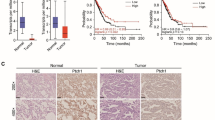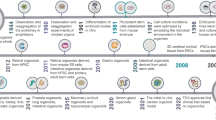Abstract
Activation of receptor tyrosine kinases is recognized as a hallmark of cancer. Vascular endothelial growth factor (VEGF) and its receptor VEGFR are the prominent players in the induction of tumor neoangiogenesis. Strategies to inhibit VEGF and VEGFR are under intensive investigation in preclinical and clinical settings. Regorafenib is a multikinase inhibitor targeting some VEGFR and other receptor kinases. Preclinical results led to the FDA approval of regorafenib for treatment of metastatic colorectal cancer patients. Effects of this drug in pancreatic ductal adenocarcinoma (PDAC) have not been investigated yet. Gene expression was assessed with real-time PCR analysis. In vitro cell viability, proliferation, apoptosis, necrosis, migration, and invasion of the PDAC cells were assessed after regorafenib treatment. Ex vivo anti-tumor effects of regorafenib were investigated in a spheroid model of PDAC. In vivo anti-tumor effects of the drug were evaluated in a fertilized chicken egg model. In this work, we have demonstrated only a marginal anticancer effect of regorafenib in PDAC in vitro and ex vivo. However, in the egg model of PDAC, this drug reduced tumor volume. Besides, regorafenib is capable of modulating the expression of cancer stem cell (CSC) markers and epithelial-to-mesenchymal transition (EMT) markers on PDAC cells. We found out that effects of regorafenib on the expression of CSC and EMT markers are very heterogeneous and depend obviously on original expression of these markers. We concluded that regorafenib might be a potential drug for PDAC and it should be investigated in future clinical trials.






Similar content being viewed by others
Abbreviations
- CSC:
-
Cancer stem cells
- EMT:
-
Eepithelial-to-mesenchymal transition
- PDAC:
-
Pancreatic ductal adenocarcinoma
- VEGF:
-
Vascular endothelial growth factor
- ECAD:
-
E-cadherin
References
Abel EV, Simeone DM (2013) Biology and clinical applications of pancreatic cancer stem cells. Gastroenterology 144:1241–1248. doi:10.1053/j.gastro.2013.01.072
Abou-Elkacem L, Arns S, Brix G, Gremse F, Zopf D, Kiessling F, Lederle W (2013) Regorafenib inhibits growth, angiogenesis, and metastasis in a highly aggressive, orthotopic colon cancer model. Mol Cancer Ther 12:1322–1331. doi:10.1158/1535-7163.MCT-12-1162
Beuran M, Negoi I, Paun S, Ion AD, Bleotu C, Negoi RI, Hostiuc S (2015) The epithelial to mesenchymal transition in pancreatic cancer: A systematic review. Pancreatology 15:217–225. doi:10.1016/j.pan.2015.02.011
Brabletz T (2012) To differentiate or not--routes towards metastasis. Nat Rev Cancer 12:425–436. doi:10.1038/nrc3265
Canter RJ et al (2014) Anti-proliferative but not anti-angiogenic tyrosine kinase inhibitors enrich for cancer stem cells in soft tissue sarcoma. BMC Cancer 14:756. doi:10.1186/1471-2407-14-756
Carr BI et al (2013) Effects of low concentrations of regorafenib and sorafenib on human HCC cell AFP, migration, invasion, and growth in vitro. J Cell Physiol 228:1344–1350. doi:10.1002/jcp.24291
Demetri GD et al (2013) Efficacy and safety of regorafenib for advanced gastrointestinal stromal tumours after failure of imatinib and sunitinib (GRID): an international, multicentre, randomised, placebo-controlled, phase 3 trial. Lancet 381:295–302. doi:10.1016/S0140-6736(12)61857-1
Fan LC et al (2016) Regorafenib (Stivarga) pharmacologically targets epithelial-mesenchymal transition in colorectal cancer. Oncotarget. doi:10.18632/oncotarget.11636
Fogli S, Danesi R, Gennari A, Donati S, Conte PF, Del Tacca M (2002) Gemcitabine, epirubicin and paclitaxel: pharmacokinetic and pharmacodynamic interactions in advanced breast cancer. Ann Oncol 13:919–927
George S et al (2012) Efficacy and safety of regorafenib in patients with metastatic and/or unresectable GI stromal tumor after failure of imatinib and sunitinib: a multicenter phase II trial. J Clin Oncol 30:2401–2407. doi:10.1200/JCO.2011.39.9394
Grothey A et al (2013) Regorafenib monotherapy for previously treated metastatic colorectal cancer (CORRECT): an international, multicentre, randomised, placebo-controlled, phase 3 trial. Lancet 381:303–312. doi:10.1016/S0140-6736(12)61900-X
Halfter K et al (2016) Testing chemotherapy efficacy in HER2 negative breast cancer using patient-derived spheroids. J Transl Med 14:112. doi:10.1186/s12967-016-0855-3
Hanahan D, Weinberg RA (2011) Hallmarks of cancer: the next generation. Cell 144:646–674. doi:10.1016/j.cell.2011.02.013
Hoffmann OI, Ilmberger C, Magosch S, Joka M, Jauch KW, Mayer B (2015) Impact of the spheroid model complexity on drug response. J Biotechnol 205:14–23. doi:10.1016/j.jbiotec.2015.02.029 https://clinicaltrials.gov/ct2/results?term=regorafenib+pancreatic+cancer&Search=Search
Huynh H, Ong R, Zopf D (2015) Antitumor activity of the multikinase inhibitor regorafenib in patient-derived xenograft models of gastric cancer. J Exp Clin Cancer Res 34:132. doi:10.1186/s13046-015-0243-5
Isayev O et al (2014) Inhibition of glucose turnover by 3-bromopyruvate counteracts pancreatic cancer stem cell features and sensitizes cells to gemcitabine. Oncotarget 5:5177–5189. doi:10.18632/oncotarget.2120
Jitawatanarat P, Wee W (2013) Update on antiangiogenic therapy in colorectal cancer: aflibercept and regorafenib. J Gastrointest Oncol 4:231–238. doi:10.3978/j.issn.2078-6891.2013.008
Karakhanova S, Golovastova M, Philippov PP, Werner J, Bazhin AV (2014) Interlude of cGMP and cGMP/protein kinase G type I in pancreatic adenocarcinoma cells. Pancreas 43:784–794
Labsch S et al (2014) Sulforaphane and TRAIL induce a synergistic elimination of advanced prostate cancer stem-like cells. Int J Oncol 44:1470–1480. doi:10.3892/ijo.2014.2335
Mross K et al (2012) A phase I dose-escalation study of regorafenib (BAY 73-4506), an inhibitor of oncogenic, angiogenic, and stromal kinases, in patients with advanced solid tumors. Clin Cancer Res 18:2658–2667. doi:10.1158/1078-0432.CCR-11-1900
Neoptolemos JP et al (2010) Adjuvant chemotherapy with fluorouracil plus folinic acid vs gemcitabine following pancreatic cancer resection: a randomized controlled trial. JAMA 304:1073–1081. doi:10.1001/jama.2010.1275
Rey JB, Launay-Vacher V, Tournigand C (2015) Regorafenib as a single-agent in the treatment of patients with gastrointestinal tumors: an overview for pharmacists. Target Oncol 10:199–213. doi:10.1007/s11523-014-0333-x
Schmieder R et al (2014) Regorafenib (BAY 73-4506): antitumor and antimetastatic activities in preclinical models of colorectal cancer. Int J Cancer 135:1487–1496. doi:10.1002/ijc.28669
Schmittgen TD, Livak KJ (2008) Analyzing real-time PCR data by the comparative C(T) method. Nat Protoc 3:1101–1108
Strumberg D et al (2012) Regorafenib (BAY 73-4506) in advanced colorectal cancer: a phase I study. Br J Cancer 106:1722–1727. doi:10.1038/bjc.2012.153
Takigawa H et al (2016) Multikinase inhibitor regorafenib inhibits the growth and metastasis of colon cancer with abundant stroma. Cancer Sci 107:601–608. doi:10.1111/cas.12907
Wei N, Chu E, Wu SY, Wipf P, Schmitz JC (2015) The cytotoxic effects of regorafenib in combination with protein kinase D inhibition in human colorectal cancer cells. Oncotarget 6:4745–4756. doi:10.18632/oncotarget.2938
Werner J, Combs SE, Springfeld C, Hartwig W, Hackert T, Buchler MW (2013) Advanced-stage pancreatic cancer: therapy options. Nat Rev Clin Oncol 10:323–333. doi:10.1038/nrclinonc.2013.66
Wilhelm SM et al (2011) Regorafenib (BAY 73-4506): a new oral multikinase inhibitor of angiogenic, stromal and oncogenic receptor tyrosine kinases with potent preclinical antitumor activity. Int J Cancer 129:245–255. doi:10.1002/ijc.25864
Zhang Y et al (2015) Aspirin counteracts cancer stem cell features, desmoplasia and gemcitabine resistance in pancreatic cancer. Oncotarget 6:9999–10015. doi:10.18632/oncotarget.3171
Zhu Y, Karakhanova S, Huang, X, Deng S, Werner J, Bazhin AV (2014) Influence of interferon-<alpha> on the expression of the cancer stem cell markers in pancreatic carcinoma cells. Exp cell. 324(2):146–56. doi:10.1016/j.yexcr.2014.03.020
Acknowledgements
We thank Ms. Tina Maxelon and Mr. Markus Herbst, for their excellent technical assistance. We would like to thank our anonymous reviewers for excellent comments to improve our work. This work was supported in part by grant #15-04-05171 to PPPh from the Russian Foundation for Basic Research.
Author information
Authors and Affiliations
Corresponding author
Electronic supplementary material
Fig. S1
Analysis of cell proliferation (high level of the tested parameter corresponds to high optical density (OD) measured photometrically) after 72 h incubation with 2 μM regorafenib or with a vehicle control (0.2% DMSO) (co). The data of three independent experiments are presented with SE and analyzed with the unpaired two-tailed t-test, * p < 0.05. (PPT 150 kb)
Fig. S2
Analysis of cell invasion (high level of the tested parameter corresponds to high optical density (OD) measured photometrically) after 72 h incubation with 2 μM regorafenib or with a vehicle control (0.2% DMSO) (co). The data of three independent experiments are presented with SE and analyzed with the unpaired two-tailed t-test. (PPT 148 kb)
Table S1
Relative expression of CD44, CD44, CD133, vimentin and ECAD in MiaPaca and Capan1. (DOCX 15 kb)
Table S2
Clinical studies with regorafenib in PDAC patients (DOCX 13 kb)
Rights and permissions
About this article
Cite this article
Mayer, B., Karakhanova, S., Bauer, N. et al. A marginal anticancer effect of regorafenib on pancreatic carcinoma cells in vitro, ex vivo, and in vivo. Naunyn-Schmiedeberg's Arch Pharmacol 390, 1125–1134 (2017). https://doi.org/10.1007/s00210-017-1412-1
Received:
Accepted:
Published:
Issue Date:
DOI: https://doi.org/10.1007/s00210-017-1412-1




